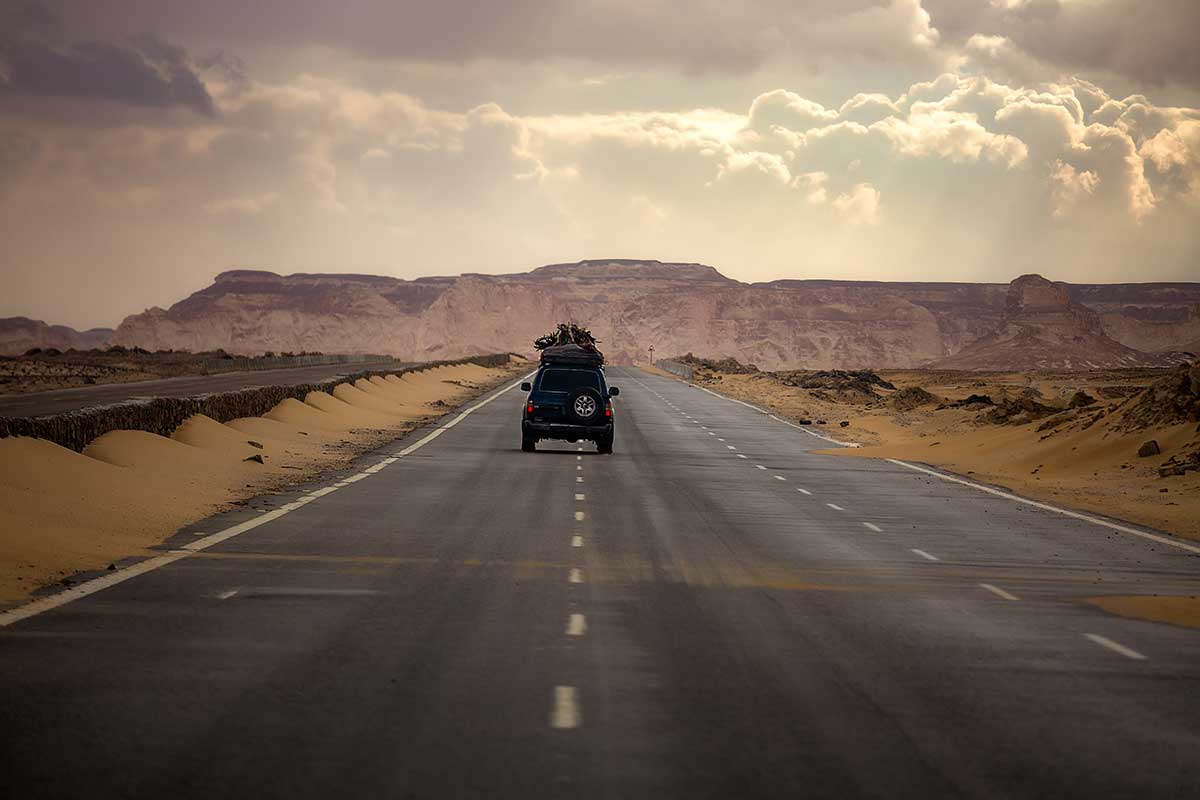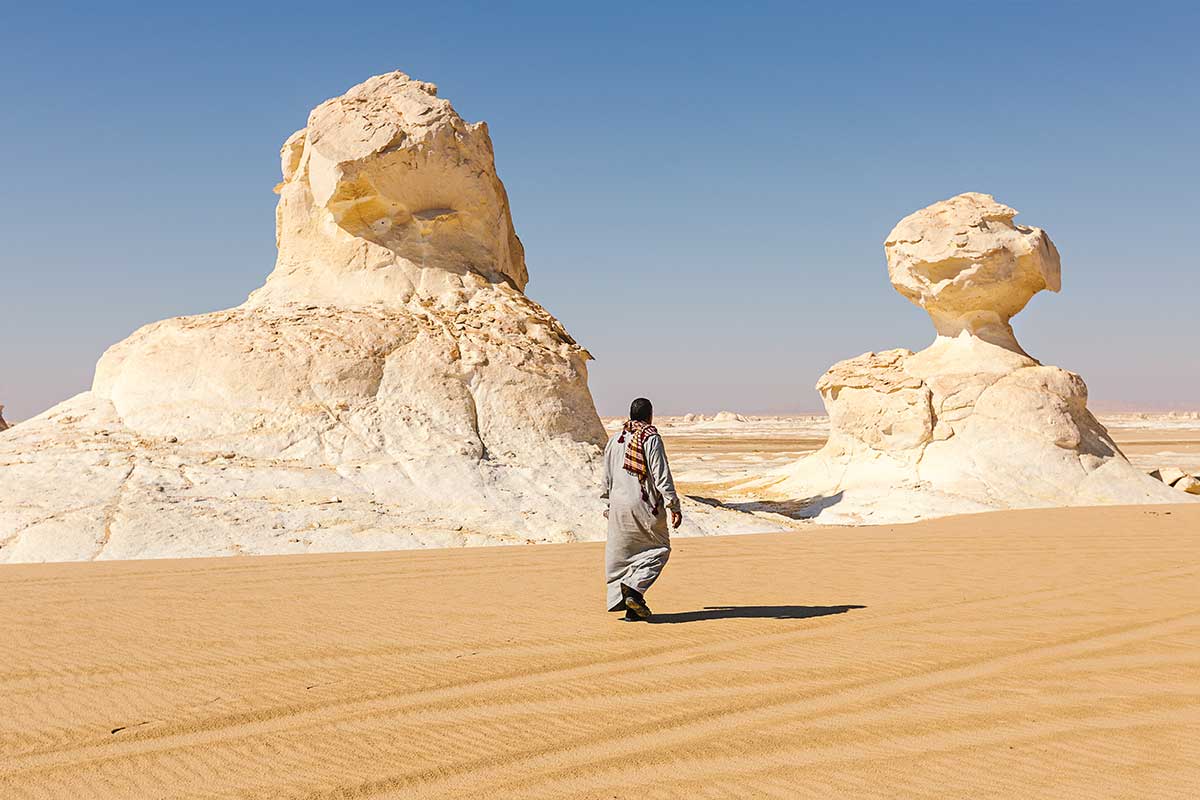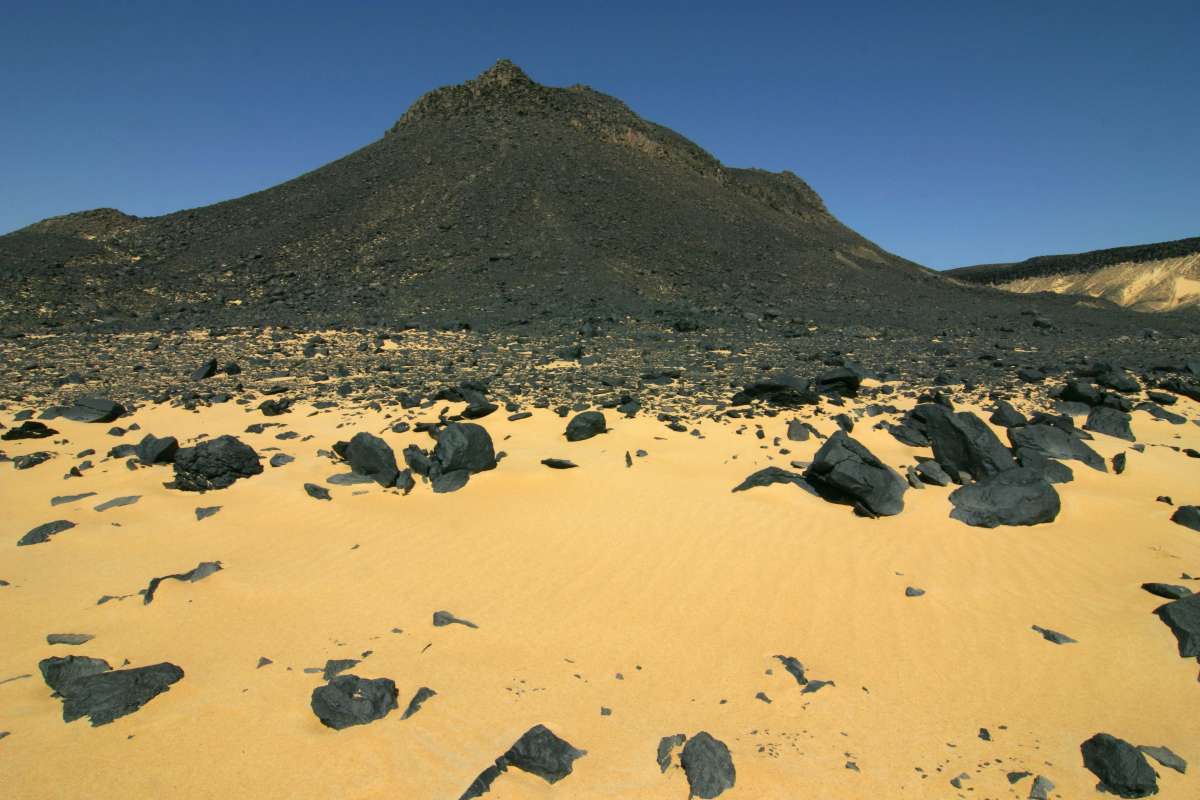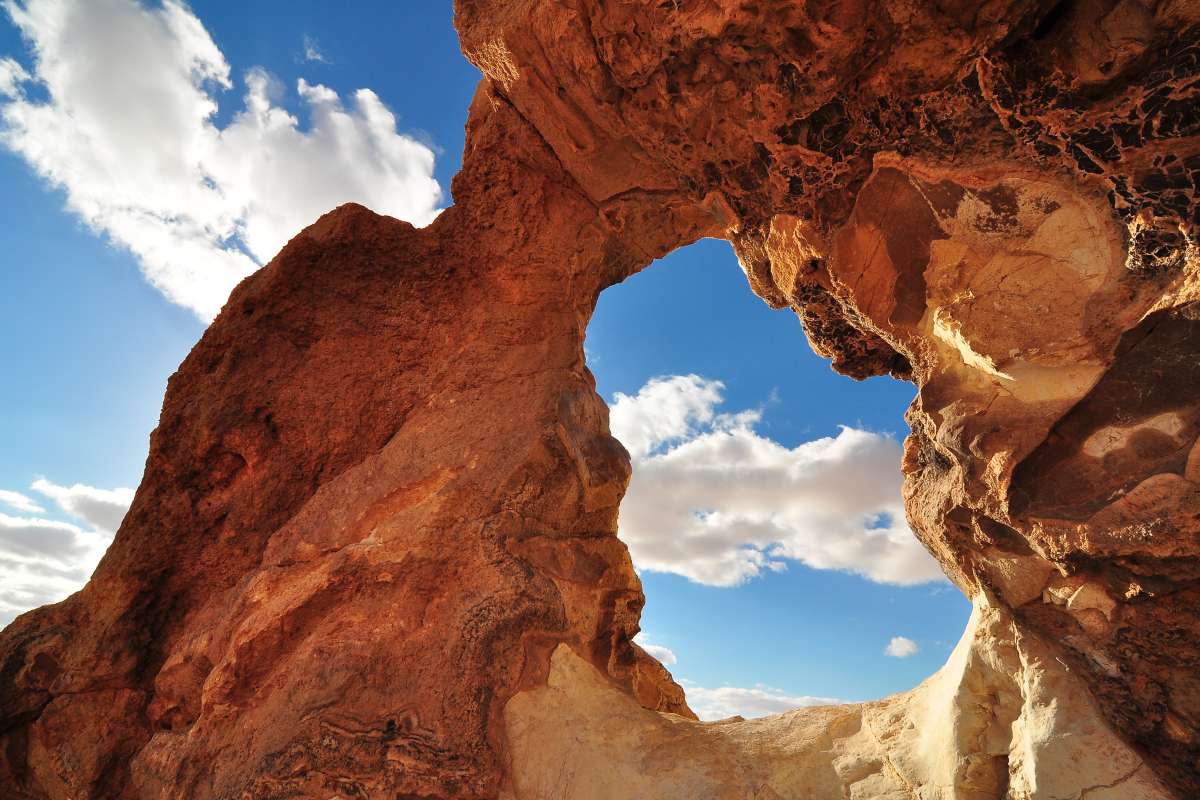With its recent discoveries of Pharaonic times, proximity to Cairo, and unforgettable excursions in the Western Desert, Bahariya Oasis has become a favorite among travelers. If you’re planning to visit, we’ve got you covered with everything you need to know. And don’t leave anything to chance – rely on Egipto Exclusivo to plan every detail for a fully enjoyable experience!
Bahariya Oasis is situated in the Western Desert, approximately 200 km west of the Nile Valley and 370 km by road from Cairo. Excluding Fayum Oasis, which is practically integrated into the Nile Valley due to its geographical peculiarities, Bahariya Oasis is the closest oasis to the capital, if we exclude the Fayum Oasis from the list. It is administratively part of the Giza Governorate.
In reality, Bahariya Oasis is made up of several small towns located close to each other. The inhabitants of these towns exploit the agricultural possibilities offered by the land. The main town, Bawiti, has a population of several tens of thousands of inhabitants. El-Harra and Bahariya are other towns in the oasis, with the latter giving its name to the oasis for being the closest to the small mass of water that emerges here. In addition to agriculture and tourism, mining is another current economic activity dedicated to the extraction of iron.

Despite its current humble population, the Bahariya Oasis was once a prosperous place, particularly during the Greco-Roman era. The magnitude of the necropolis discovered a few decades ago suggests that around 500,000 people could have lived here, although this is a difficult calculation to make. At that time, local crops provided abundant wheat and wine for the populations of the Nile Valley, and the area had an important defensive fortress.
However, the strategic location of the Bahariya Oasis on caravan routes means that its emergence and development were much earlier. Stone fragments with inscriptions dating back to the Old Kingdom and Middle Kingdom have been found in various archaeological campaigns.
Furthermore, the Bahariya Oasis was once home to dinosaurs. In the 1930s, discoveries led to the naming of a species of megaraptorid theropod as Bahariasaurus, which lived here in the Cretaceous period, approximately 95 million years ago.
Undoubtedly, the discovery of the Valley of the Golden Mummies was a boost for tourism in the Bahariya Oasis. It is its great attraction, both for its uniqueness and its mysterious beauty. The mummies and their sarcophagi, some with gold masks and rich jewelry, were found in a necropolis about 6 km from Bawiti. Among them is the local governor Jed Khenso Ifuankh.
Although the vast majority of what was discovered is not open to the public, some mummies and sarcophagi have been selected to be part of the Golden Mummies Hall, the main museum in the city of Bawiti. Here you can see how these funerary works of art, dating back to the Greco-Roman period, have a style that transitions between the rigid forms of Ancient Egypt and the more realistic ones of the ‘portraits of El Fayum’.
At first glance, the Bahariya Oasis may not generate a great visual impact, as may occur, for example, in Siwa. There are no large ruins from ancient times here, nor such lush vegetation. But with a little digging, some discoveries worthy of knowing emerge. We’ll tell you about them below.
Undoubtedly, the discovery of the Valley of the Golden Mummies was a boost for tourism in the Bahariya Oasis. It is its great attraction, both for its uniqueness and its mysterious beauty. The mummies and their sarcophagi, some with gold masks and rich jewelry, were found in a necropolis about 6 km from Bawiti. Among them is the local governor Jed Khenso Ifuankh.
Although the vast majority of what was discovered is not open to the public, some mummies and sarcophagi have been selected to be part of the Golden Mummies Hall, the main museum in the city of Bawiti. Here you can see how these funerary works of art, dating back to the Greco-Roman period, have a style that transitions between the rigid forms of Ancient Egypt and the more realistic ones of the ‘portraits of El Fayum’.
While not as grand as other sites in Egypt, the Bahariya Oasis still boasts fascinating archaeological remains that will capture the interest of Egyptology enthusiasts. One notable site is the remains of a temple dedicated to Alexander the Great, the only one of its kind in the entire country. The veneration of pharaohs was a common practice throughout Ancient Egypt, and this Macedonian emperor, who took on the title of pharaoh upon his arrival in the country, was no exception. It is unclear why the temple was built in this location, but it is believed that Alexander may have passed through the Bahariya Oasis on his way back from visiting the oracle of Siwa, which could have prompted such a desire among its people.
Another significant temple discovered in the Bahariya Oasis is dedicated to Amun-Ra and dates back to the 26th Dynasty, the same period as the Golden Mummies necropolis.
While the Bahariya Oasis is a fascinating destination on its own, many visitors are also drawn to its exciting excursions. From here, you can travel to some of the most captivating places the Western Desert has to offer, accessible only by 4×4 vehicles.

As can be deduced from its name, the White Desert is a desert region filled with unique rock formations that boast a remarkable white color. The rocks are a blend of limestone and chalk, and they display different hues depending on the time of day and the season. The White Desert is located on the road that connects the Bahariya Oasis with Farafra, about 100 km south of Bawiti.
The formations themselves are a product of thousands of years of erosion, resulting in unique and fascinating shapes. Each traveler will interpret them differently, with some of the most interesting formations resembling camels, sphinxes, mushrooms, birds, and more. The Bedouins, for instance, named it the ‘Carrot Valley’ because they saw the shapes of carrots in many of the rocky pinnacles in the area.

If you are looking for a unique and striking landscape, look no further than the Black Desert, which is located just 50 km south of Bawiti and is considered the counterpart to the White Desert. The predominant color of the rock formations here is black, which is the result of dolerite, an igneous rock that was expelled by already-inactive volcanic mountains in the Western Desert.
These volcanic eruptions covered the area with black rock, which over time has eroded and given rise to the characteristic hills you’ll see here. The contrast of the black rock against the golden sand of the desert creates an unforgettable visual experience. One of the best ways to take in the beauty of the Black Desert is by climbing one of the hills, such as English Mountain, to get a spectacular panoramic view of the desert and the surrounding landscape.

For a truly unique and stunning experience, the Crystal Mountain excursion is not to be missed. This excursion is located between the White Desert and the Black Desert, about 90 km south of Bawiti, and is accessible from the Bahariya oasis or the Farafra oasis.
As the name suggests, Crystal Mountain is a rocky promontory made primarily of quartz crystal, giving it a shiny and almost transparent appearance. This natural wonder is a rare example because formations like these are typically found underground in the form of a cave. It is believed that the crystals grew towards the surface due to erosion caused by the gradual withdrawal of water in the area. Some have even referred to it as an “exhumed cave,” which vividly illustrates the possible history of this natural phenomenon. If you are seeking a unique and unforgettable experience, the Crystal Mountain excursion is definitely worth exploring.
Located about 200 km east of the Nile Valley in what is often referred to as Middle Egypt, the Bahariya Oasis does not have a direct road connection with the area. As a result, there are no airports, train stations, river routes for cruises, or regular bus lines to get here. The only solution is to travel by private vehicle from Cairo. (consult here how to get to Cairo).
The Bahariya Oasis is approximately 370 km from the capital city, which translates to almost 4 and a half hours of travel along the El Wahat Road. This road is paved and relatively well maintained due to the presence of some scattered industrial facilities along the way.
It is essential to have a private vehicle with a driver for comfort and safety in general. Distances in the desert are immense, and conditions can be extreme, so traveling autonomously is not recommended as any mishap can worsen in the absence of company.
If you plan to visit the Bahariya Oasis from Cairo or as part of a tour through the different oases of Egypt, consider contacting Egipto Exclusivo. We can provide you with the service and support you need to make this adventure as exciting and enriching as possible while keeping you safe. Contact us now for more information.


Fill out the form below to receive a free, no-obligation, tailor-made quote from an agency specialized in Egypt.
Travel agency and DMC specializing in private and tailor-made trips to Egypt.
Mandala Tours, S.L, NIF: B51037471
License: C.I.AN-187782-3